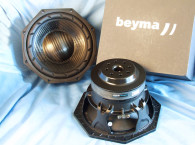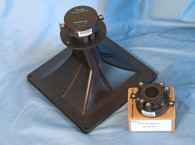
This month, Beyma sent Voice Coil the first two tweeters in the NMF series, the T-25M aluminum/magnesium alloy metal dome tweeter, and the T-25S silk dome tweeter. Both of these new tweeters share a similar feature set, however, before getting into the physical details of the T-25M and T-25S 1” dome tweeters, I should mention that Beyma added Diego Ivars to its engineering staff in July, 2020. Ivars was a transducer engineer at SEAS for nearly a decade before joining Beyma, so he brought significant home audio transducer engineering chops for dome tweeter development to a company that is primarily in the pro sound woofer, midrange, and compression drivers business.
Starting with the T-25M (Photo 1), features include a 25.4mm diameter reinforced black anodized aluminum/magnesium diaphragm with a large 6mm wide polymer-based surround, a 25.4mm diameter CCAW voice coil wound on an vented aluminum former (this tweeter does not use low viscosity magnetic fluid in the gap area, which I prefer on higher end system designs), a FEA-designed 72mm x 15mm ferrite magnet sandwiched between a cast T-yoke, and a polished CNC’d front plate. I should also note that the CNC front plate has shaped cavity areas below the diaphragm.
The vented pole piece is fitted with a copper cap plus three types of damping material (dense felt on the pole surface, open cell foam in the pole vent, and felt behind the vent in the rear cavity. The rear cavity is cast aluminum and is constructed so that it screws to the back of the aluminum front plate holding the entire assembly together rather than the magnet assembly being screwed from the front like the majority of tweeters in the industry. This results in a particularly clean-looking front plate cosmetic appearance as seen in Photo 2.

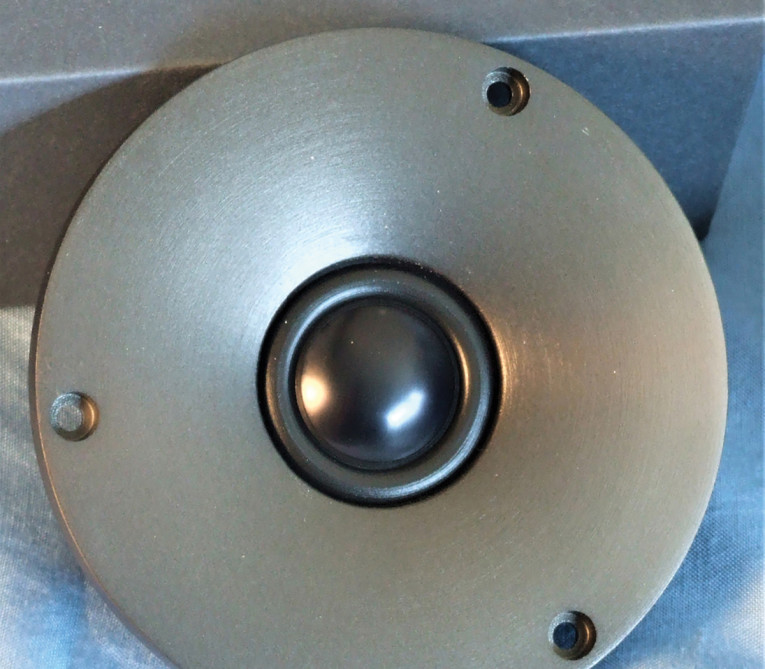
The cast-aluminum front plate is flared for controlled directivity. Figure 1 shows the directivity map. Remaining features include a 20W AES power handling, recommended crossover frequency of 2.5kHz (with a 12dB/octave high-pass filter), 88dB at 2.83V/1m sensitivity, and standard solderable terminals. I should also mention that both tweeters, the T-25M and the T-25S, come in some world-class packaging that incorporates a magnetic fastened lid.
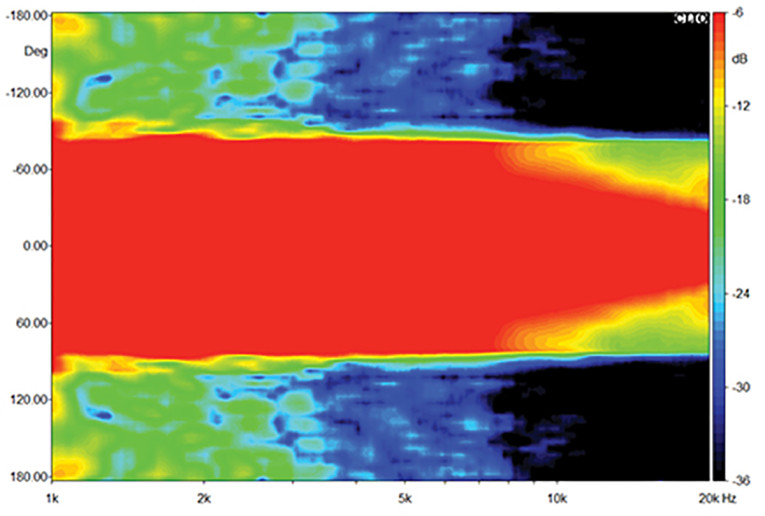
Testing commenced using the LinearX LMS analyzer to produce the 300-point impedance sweep illustrated in Figure 2. The impedance resonance occurs at 574Hz (factory spec is 600Hz). DCR for the Beyma T-25M is 3.25Ω, while the minimum impedance is 3.19Ω at 2.1kHz. While the impedance resonance almost looks as if it has been damped with magnetic fluid in the gap, this is just some well applied mechanical damping, which is impressive.

Following the impedance test, I recess-mounted the T-25M tweeter in an enclosure with a baffle area of 12”×6” and measured the on- and off-axis frequency response using the Loudsoft FINE R+D analyzer (provided courtesy of Loudsoft) and the GRAS 46BE ¼” microphone (courtesy of GRAS Sound & Vibration). The devices were set up to measure the 200Hz to 40kHz frequency response (using a 192kHz sampling rate) at 2V/0.5m, normalized to 2.83V/1m. Sweeps were performed at 0°, 15°, 30°, and 45°. Figure 3 shows the on-axis response of the T-25M tweeter, which measured ±2dB from 2.5kHz to 27kHz, followed by the aluminum/magnesium breakup mode at 39kHz.
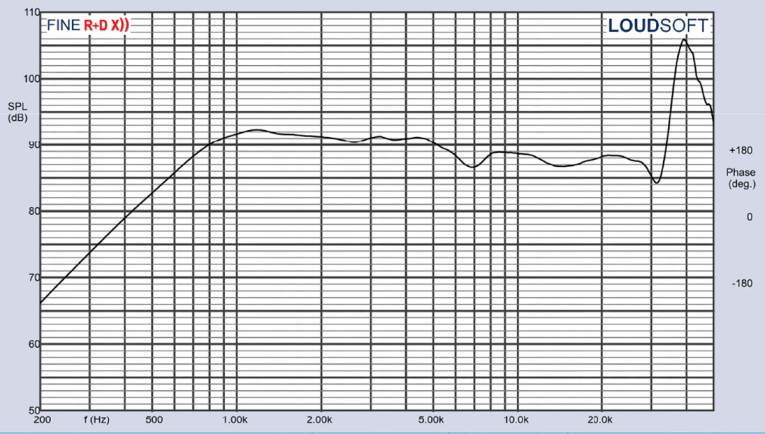
Figure 4 gives the on- and off-axis response of the Beyma T-25M tweeter, with the off-axis curves normalized to the on-axis response shown in Figure 5. Figure 6 shows the CLIO 180° polar plot (measured in 10° increments with 1/3 octave smoothing). The two-sample SPL comparison of the T-25M is illustrated in Figure 7, indicating the two samples were closely matched to within 0.5dB to 1dB throughout its operating range from 2.5kHz to 20kHz.
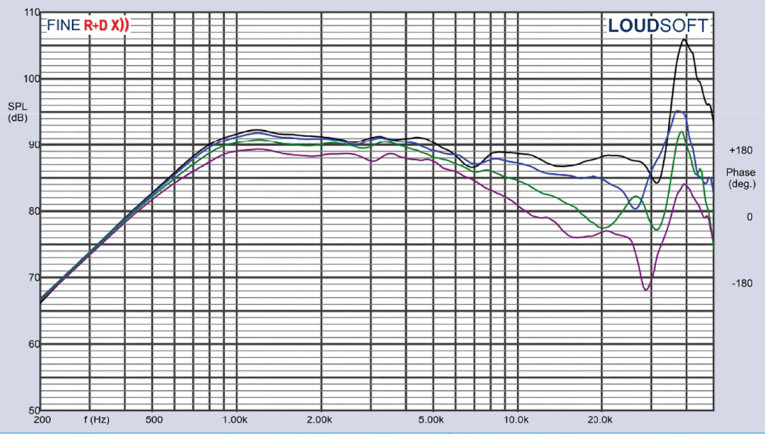

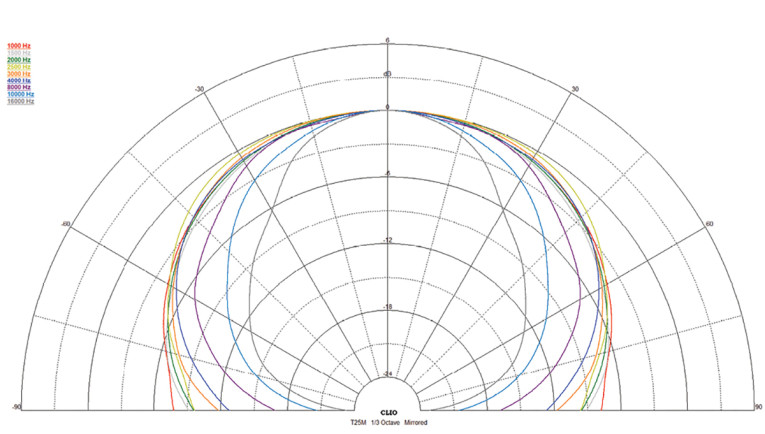
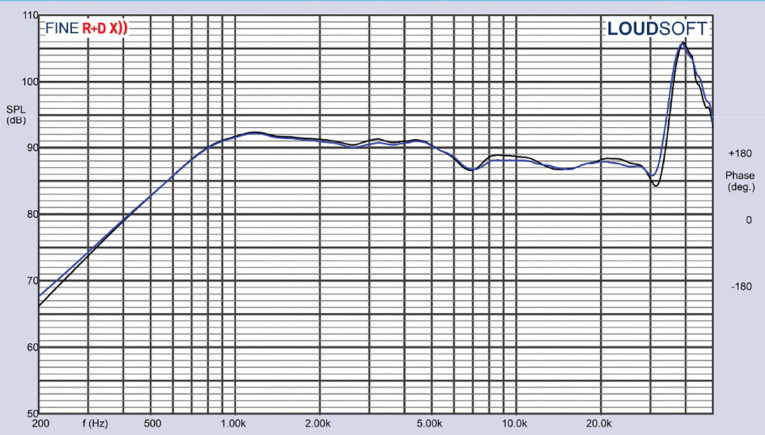
For the last group of tests, I initialized the Listen SoundCheck AudioConnect analyzer along with the Listen SCM 2 ¼” microphone (provided courtesy of Listen, Inc.) and measured the impulse response with the tweeter recess-mounted on the same 12”×6” test baffle. Importing this data into the Listen SoundMap software produced the cumulative spectral decay (CSD) “waterfall” plot shown in Figure 8. Figure 9 depicts the Short Time Fourier Transform (STFT) displayed as a surface plot. For the final test procedure, I set the 1m SPL to 94dB (5.2V), using a pink noise stimulus, and measured the second and third-harmonic distortion at 10cm, illustrated in Figure 10. Distortion is dominated by the second harmonic with a very low third-harmonic distortion, however even the second-harmonic content is below 1% above 3kHz.

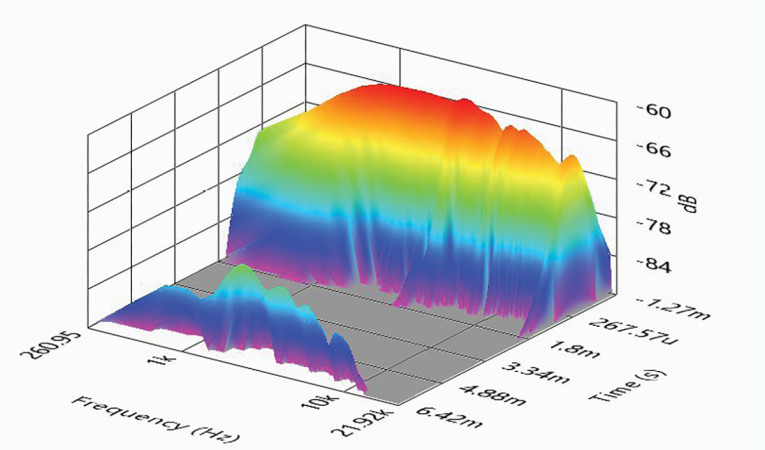

The build quality of the T-25M is definitely appropriate for the high-end two-channel and studio monitor market for which it is intended. So, given the above data collected for the T-25M, I would say that this new Beyma high-end OEM tweeter is definitely a contender in a rarified atmosphere occupied by companies such as Scan-Speak, SEAS, Eton, Accuton, and others. VC
www.beyma.com/en/products.
Read here the Test Bench on the new Beyma NMF series T-25S silk dome tweeter.
This article was originally published in Voice Coil, December 2022





